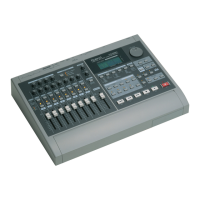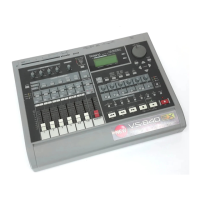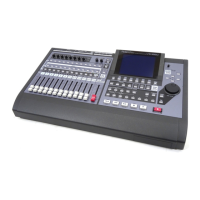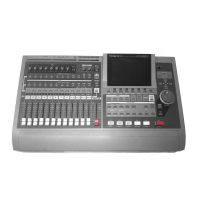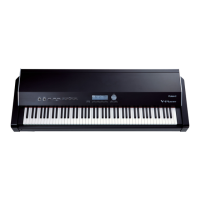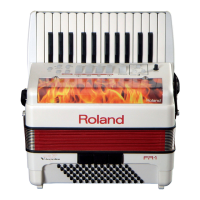VS-880EX Application Guide
126
Comping
The process of creating a single recording from
multiple takes. i.e.: In many cases a single vocal
recording on one track may not have the best version
of a singer’s performance. Engineers cut and paste
sections of multiple tracks together to get one
complete useful recording. This process in known as
“comping” and the final outcome is called a “comp.”
Compressor
A compressor is an amplifier that decreases its gain
as the level of the input signal increases to reduce the
dynamic range of the program (see “compression”).
A compressor may operate over the range of input
levels, or it may operate only on signals above or
below a given level (the threshold level).
Condenser Microphone
A microphone utilizing a capacitor (condenser) as a
pickup element. Electronics are usually contained in
the microphone body and a polarizing voltage is
necessary, so external or battery power is required,
and output levels are usually higher than other types
of microphones. Condenser microphones are
commonly used for high quality audio applications.
COSM (Composite Object Sound
Modeling)
COSM was first introduced with Roland’s VG-8 V-
Guitar System. The VG-8 used COSM processing to
electronically reproduce all of the stages of a guitar
signal chain, including the placement of the pickup,
the type and body of the guitar, the amp processor,
the speakers and cabinets, and the microphone and
placement of the microphone at the speaker.
These models are extremely accurate and allow great
control over the sound of any guitar. The built-in
effects in the VS-880EX include some of the COSM
preamplifier and speaker models, plus new
Microphone Simulators.
Cue Bus
In a mixing console, the Bus or channel which is used
to feed a program to performers’ headphones. Also
known as the foldback Bus. See “cue circuit,
performer headphone cue.”
Cue Circuit (Foldback Circuit)
Channel Cue
A circuit which enables one to monitor an input
position with the fader down (no program feed);
for program identification or troubleshooting.
Communications Cue
An intercom system made up of amplifiers,
headphones, microphones and signaling lights or
tones; for coordination of sound, lighting, stage
and other personnel. Not for the actual audio
program.
Performer Headphones Cue
In recording studio work, a mono or stereo mix
which is fed to performers so they can hear other
performers and themselves, or can monitor a
previously recorded program (tracks) for
overdubbing.
D Connector
A common term for the interface connector used for
many computer signals, printers, monitors, etc.
Named because it has a shape similar to a capital D.
DAC
Digital-to-Analog Converter. An electronic device
used at the output of digital audio equipment to
convert digital numbers representing level and
frequency information back to a continuously
varying analog electrical signal.
DAT (Digital Audio Tape)
A recording medium that records audio signals to
tape digitally, via a hardware recording device called
a DAT Recorder.
dB
The “dB” (decibel) is a unit of measurement for ratios
of sound level, power, voltage, and other quantities.
The dB is only meaningful when referenced to some
actual value. See “dBm”, “dBV”, “dB SPL.”
dBm
dBm is an electrical measurement of power. 0 dBm is
equal to 1 milliwatt, which is the same as 0.775 volts
across a 600-ohm impedance (+30 dBm is 1 watt, +50
dBm is 100 watts).
dBV
dBV is an electrical measurement of voltage. 0 dBV is
equal to 1 volt (+10 dBV is 20 volts).
dB SPL
SPL is Sound Pressure Level (i.e., an acoustical
measurement). One dB SPL is the smallest audible
difference in sound level. 0 dB SPL is 0.0002 dynes/
square centimeter or 20 micro-Pascals. It is also the
threshold of human hearing at 1 kHz (the threshold
of pain is between 120 and 130 dB SPL).

